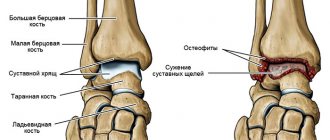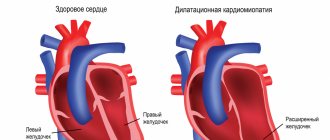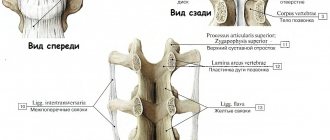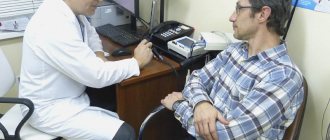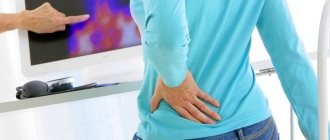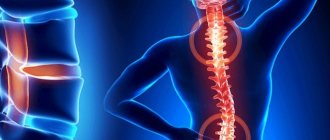15 April 2020
46145
0
3 out of 5
Spondylosis is a chronic disease of the spine in which there is severe thinning and wear of the intervertebral disc, which leads to the formation of bone outgrowths called osteophytes on the surfaces of the vertebral bodies. In advanced cases, they grow so much that they begin to come into contact with each other and grow together. The result of such processes is the fusion of two or more vertebrae into a single conglomerate, which leads to their complete immobilization.
Previously, spondylosis was regarded as an age-related disease. It was mainly diagnosed in older people over 65 years of age. But today the disease occurs both in older age groups and in very young people. Already at the age of 45, 20–35% of people have this disease, and recently it has been detected even in 25-year-olds.
Most often, spondylosis is diagnosed in men.
Spondylosis
Spondylosis is a pathological condition of the spine, which is characterized by compaction or fixation of the vertebrae as a result of degenerative changes in the intervertebral discs and near the vertebrae themselves (formation of osteophytes).
The disease can manifest itself in different parts of the spinal column. Depending on the location of the process, it is customary to distinguish cervical spondylosis, as well as spondylosis of the thoracic and lumbar regions. Spondylosis deformans is a special disease in which there is an overgrowth of the bone tissue of the spine with the formation of osteophytes. Over time, this pathological condition can provoke fusion of the vertebrae with a sharp limitation of the mobility of the spinal column and disability of the sick person.
The first signs of the disease can be diagnosed between the ages of 20 and 30 years. But at this time, the pathological condition rarely manifests itself with a clear clinical picture and practically does not prevent a person from leading a full lifestyle. According to official statistics, both men and women over the age of 50 seek medical help when spondylosis progresses.
General information
As the body ages, the structures of the spine wear out. Joints, ligaments, and intervertebral discs are especially susceptible to negative changes. All changes that occur in the spinal column are purely individual and depend on many factors.
For some people, this disease is not age-related; its development can be triggered by other reasons. The symptoms of the disease are also highly individual. In some people, the clinical manifestations of degenerative changes are more pronounced, in others they are moderate. Also, the appearance of pain is directly influenced by the location of the pathology, its effect on the spinal cord or spinal roots.
Spondylosis deformans can develop in all parts of the spinal column. And the symptoms are determined by the localization of the pathological process. Doctors often diagnose osteoarthritis or osteoarthritis.
Causes of spondylosis development
Spinal spondylosis is a polyetiological disease, since the reasons for its development can be very different. Most often, degenerative-dystrophic changes in the vertebrae and intervertebral discs with the formation of osteophytes occur as a result of:
- spinal injuries;
- diseases that are accompanied by spinal deformity;
- osteochondrosis of the spinal column, when there is an increase in pressure on the joints as a result of abrasion of the vertebrae and narrowing of the intervertebral space;
- physical inactivity and lack of sufficient active movements in the back;
- prolonged hypothermia of the body with impaired innervation and blood supply to the spine;
- heavy physical work and severe stress on the spine;
- age-related changes in bone tissue;
- metabolic disorders;
- endocrine diseases.
Regardless of the reasons for the development of this pathological condition, it cannot be left without qualified attention. Ignoring the problem will develop consequences over time and will lead to the progression of the pathological process with the appearance of its complications, which often limit the basic physical capabilities of a person.
Treatment of spondylosis
To combat the disease, both conservative therapy and surgery can be used. The operation is a last resort, which is used only in the presence of strict indications. Therefore, initially, patients are most often prescribed conservative treatment. It is most effective in the 1st stage of spondylosis, but since at this stage the symptoms of the disease are still slightly expressed, it is rarely detected.
Conservative therapy is developed for each patient individually, taking into account the level of damage, the number of vertebrae involved in the pathological process, the presence of concomitant diseases, age and a number of other factors. Therefore, only a highly qualified specialist can correctly draw up treatment tactics and take into account all the nuances. As a rule, conservative therapy for spondylosis includes:
- drug therapy;
- exercise therapy;
- physiotherapy;
- manual therapy.
But such treatment cannot lead to a complete recovery, since the already formed bony protrusions can only be removed surgically. But conservative therapy for spondylosis makes it possible to significantly improve the patient’s condition, stop the progression of the pathology and prevent the development of complications.
Drug treatment for spondylosis
Treatment of spondylosis is very similar to the treatment of osteochondrosis, since this disease lies at the origins of the formation of osteophytes. Therefore, therapy is aimed not only at eliminating the symptoms of pathology, but also at improving metabolic processes in the structures of the spine.
Thus, patients are prescribed medications of certain groups that help slow down the progression of degenerative processes in the intervertebral discs and improve the quality of transmission of bioelectric impulses along nerve fibers. This:
- NSAIDs – help reduce the severity of pain and have an anti-inflammatory effect, used in the form of tablets, ointments, gels and injections;
- corticosteroids – have a powerful anti-inflammatory effect;
- muscle relaxants – eliminate reflex muscle spasms, which leads to a reduction in back pain;
- psychotropic drugs – increase the effectiveness of muscle relaxants and NSAIDs, and also improve the quality of sleep, have a positive effect on the psycho-emotional state of patients who often suffer from long-term and persistent spondylosis;
- chondroprotectors – contribute to the normalization of metabolic processes in the tissues of the intervertebral discs and their restoration (there is no indisputable clinical evidence of effectiveness);
- drugs that improve microcirculation in the affected area - activate blood circulation, which provides better tissue nutrition and reduces the risk of disease progression.
All medications for spondylosis are selected exclusively by a doctor who has complete data on the patient’s health status. Therefore, to reduce the side effects of certain drugs, patients are often prescribed cover with others, for example, proton pump inhibitors.
You should not self-prescribe medications. This can negatively affect the general condition and cause serious disruptions in the functioning of internal organs.
For very severe pain that is not relieved by other means, patients may be prescribed paravertebral blockades. The procedure involves injections of anesthetics and corticosteroids into the spine at strictly defined points. It is carried out exclusively in a medical facility by specially trained medical personnel, since violation of the technique of paravertebral blockades or performance in unsterile conditions is fraught with the development of severe complications.
The procedure allows you to almost instantly eliminate even very severe pain, and the injected corticosteroids have a pronounced anti-inflammatory effect. After it, the patient can almost immediately return to performing daily duties. But the blockade should be regarded solely as a means of emergency assistance. It can be done no more than 4 times a year, with some exceptions when paravertebral injections are prescribed in courses.
Exercise therapy for spondylosis
Physical therapy is one of the main areas of conservative treatment of spondylosis. Classes are held daily, but all exercises are selected strictly individually by a specialist. This takes into account not only the characteristics of the course of the disease, but also the level of physical development of the patient, his weight, type of professional activity, as well as the presence of other disorders in the functioning of the musculoskeletal system.
Initially, patients are recommended to engage in therapeutic exercises under the supervision of a doctor. He will help you master the correct technique for performing each exercise, and choose the optimal duration and frequency of classes. Only after this, patients are allowed to continue exercising at home and are explained how to properly increase the load to achieve optimal results.
Thanks to exercise therapy for spondylosis, it is possible to:
- strengthen the muscle corset and ligaments without harming the affected segment of the spine;
- reduce back muscle tension in the affected area;
- increase mobility and flexibility of the spine;
- reduce pressure on the intervertebral discs and vertebrae, which reduces compression of the nerve roots and leads to a significant improvement in the patient’s condition;
- activate blood circulation and metabolism, which creates favorable conditions for high-quality nutrition of a depleted intervertebral disc and stopping the progression of the pathological process;
- normalize the motor abilities of the arms and legs if spondylosis has led to their impairment;
- improve posture, which allows you to learn how to correctly distribute the load on the spine and reduce pressure on all intervertebral discs.
Exercise therapy is not a short-term measure. If you have spondylosis, you should do gymnastics every day until the end of your life. This will stop the progression of the disease and significantly reduce the intensity of pain. But even if it was possible to achieve complete normalization of the condition, you cannot stop daily exercise. Otherwise, relapse of the pathology cannot be avoided.
Additionally, patients may be recommended to swim.
Physiotherapy
Patients with spondylosis must undergo physiotherapeutic treatment. This, in combination with other methods of conservative therapy, makes it possible to achieve a significant improvement in the patient’s condition and stable remission of the disease. Physiotherapy for spondylosis makes it possible to:
- improve the course of metabolic processes;
- reduce or completely eliminate pain;
- remove muscle tension;
- reduce fatigue;
- improve blood circulation and lymph flow;
- eliminate swelling and inflammation;
- improve the quality of signal transmission along nerves;
- increase range of motion;
- strengthen the immune system.
For these purposes, patients are prescribed courses of physiotherapeutic procedures, the type of which, as well as the frequency and duration of the procedure, is selected individually. On average, 10 to 15 sessions are required to achieve positive dynamics and maintain the achieved results.
As a rule, patients with spondylosis are advised to:
- electrophoresis with novocaine;
- electropulse therapy;
- shock wave therapy
- electromyostimulation;
- UHF;
- magnetic therapy;
- laser therapy;
- UV irradiation.
Manual therapy
Outside the period of exacerbation of the disease, manual therapy sessions are recommended. A simple therapeutic massage for spondylosis is not effective, since it involves working only the back muscles. Manual therapy can also have a positive effect on the condition of the spine and the position of the vertebrae relative to the central axis.
Therefore it is used for:
- activation of blood circulation and metabolism in the affected area;
- increasing the distance between the vertebrae and reducing pressure on the intervertebral disc;
- eliminating the prerequisites for the progression of degenerative processes in the spine;
- eliminating compression of nerve roots;
- improved posture;
- normalization of the functioning of internal organs;
- strengthening the immune system.
Symptoms and diagnosis
Clinical manifestations of the disease depend on the type and degree of spondylosis. At the initial stages of the formation of the pathological process, the symptoms of spondylosis are mild and can be perceived as signs of other diseases. Over time, as the disorders progress, they become more noticeable and seriously change the sick person’s usual lifestyle.
The most characteristic symptom of spondylosis is pain in the spine. It can have different intensity depending on the nature of the pathological process and the degree of pinching of the nerve roots. Other signs indicating the development of a degenerative disease include:
- limitation of the ability to make full movements in the back;
- reduction in shock-absorbing properties;
- the appearance of a crunch in the back and neck;
- development of intense headaches and dizziness;
- noise in ears;
- blurred vision;
- the occurrence of parasthesia in the form of a feeling of numbness in the limbs, “crawling goosebumps”, etc.;
- change in normal posture, curvature of the spine;
- decreased performance.
In the absence of timely and correct treatment of disorders associated with spondylosis, complete ossification of the spine occurs, which is accompanied by a complete loss of its mobility. In this scenario, the person loses the opportunity to work and becomes disabled.
Before treatment is prescribed, the patient must be sent for additional examinations to confirm the presence of the disease and determine the degree of complexity of the disorders. To diagnose spondylosis in a person, doctors prescribe measures such as:
- radiography of the spine, which allows you to highlight areas of joint thickening and osteophytes;
- computed tomography to diagnose narrowing of the spinal canal and measure the height of the gaps between the vertebrae;
- MRI is the most informative method for studying the condition of the spinal column, which helps to assess the true causes of the pathological process and determine the presence of pinched nerves, compressed intervertebral discs, etc.
Modern diagnostic techniques make it possible to accurately determine the presence of spondylosis, assess its aggressiveness, the degree of complexity of pathological changes, and confirm or exclude the presence of complications.
Diagnostics
If a person has pain or stiffness in one part of the spine, doctors will need additional diagnostics in order to make the correct diagnosis. As a rule, this disease develops gradually as the body tissues age. A correct differential diagnosis should also be carried out, since the symptoms may be similar to other diseases of the musculoskeletal system, for example, osteochondrosis may develop.
First you need to contact a neurologist. He evaluates complaints and collects anamnesis. The following nuances are important for a specialist:
- when did the first unpleasant symptoms appear?
- what type of activity a person is engaged in, because this could also provoke the development of pathological processes;
- what exactly did the person do to reduce the severity of the pain, what medications did he take and which medications helped him get rid of the intensity of the symptoms;
- whether the pain radiates to other areas, joints or parts of the body;
- what exactly causes an increase in pain or after which the pain becomes less pronounced.
A neurologist performs an external examination of the spine, assesses the correctness of posture, how well movements are preserved, and whether there is spasm in the muscles. An assessment of the joints is carried out - hip, sacral.
Instrumental research techniques are key in making the correct diagnosis:
- radiography;
- CT scan;
- Magnetic resonance imaging.
Using these methods, the doctor determines how severe the changes are in the ligaments, discs, muscles and nerves. If there are foci of an infectious process, scintigraphy may be additionally prescribed. Only after a comprehensive examination does the doctor make a diagnosis and prescribe subsequent therapy. The sooner treatment is started, the faster you can get rid of discomfort and stop the progression of the disease for a while.
Features of spondylosis of the thoracic spine
Spondylosis of the thoracic spine has several characteristic features. This variant of the degenerative-dystrophic process in the thoracic vertebrae in the early stages of its development is practically asymptomatic. For a long time the patient does not show any complaints. As the disease progresses, it begins to manifest itself as painful sensations against the background of limited movement in the thoracic region.
The disease, which occurs in the thoracic region, develops as a result of traumatic injuries to the spine, decreased calcium levels in the body, congenital deformities or age-related changes. It often causes the patient to develop cardiopathy with intense pain in the heart, respiratory disorders, muscle spasms and numbness in the limbs.
Causes of spondylosis
Overgrowth of vertebrae with osteophytes can be caused by the following reasons.
- Age-related changes that lead to disruption of metabolic processes, a decrease in the concentration of calcium, phosphorus, sodium, magnesium, collagen.
- Overweight. The skeletal system is designed to bear a certain load, and it is different for each person. Its regular excess gives rise to degenerative-dystrophic processes.
- Unbalanced diet. The body does not receive the required amounts of vitamins, micro- and macroelements necessary for bone tissue through food.
- Physical inactivity. The cause of spondylosis is not only sedentary work, but also long-term limitation of physical activity due to any disease.
- Rare increased physical activity with a sedentary lifestyle (for example, weekly work in a summer cottage).
- Constant excessive loads. They lead to disruption of the smooth functioning of the spine. This factor is the main cause of spondylosis in men aged 40 years and older.
- Spinal injuries, systematic microtraumas of the spine.
- Systemic connective tissue diseases: rheumatoid arthritis, lupus erythematosus, scleroderma.
- Other diseases of the spine: osteochondrosis, spondylolisthesis.
- Congenital anomalies, genetically determined pathology of cartilage tissue.
- Acquired or congenital deformation of the spinal column: kyphosis, scoliosis.
- Disorders of metabolic processes, including endocrine pathologies.
Treatment of spondylosis is carried out comprehensively and is aimed not only at relieving symptoms, but also eliminating the causes.
Sacral spondylosis
Spondylosis of the lumbosacral spine is one of the most common diagnoses among the total number of diseases of a degenerative-dystrophic nature. This type of pathology is characterized by lumbar ischialgia (lower back pain) and numbness in different parts of the lower extremities.
The classic diagnostic sign of lumbosacral spondylosis is decreased pain in the fetal position and when bending forward. In addition, such patients complain of morning stiffness in the lower back and legs, as well as the appearance of lameness, which becomes permanent over time.
Spondylosis most often affects the third and fourth lumbar vertebrae. The sacrum is drawn into the pathological process already at fairly advanced stages of the disease. For a long time the disease exists asymptomatically. In the later stages of its formation, patients experience dull lower back pain that is present on an ongoing basis.
Obvious symptoms of spondylosis
These include pain, limited mobility, and stiffness. These manifestations vary in nature and intensity depending on the location of the pathological processes. For example, pain in spondylosis can be sharp, aching, wave-like, permanent (pulsating) in nature.
Cervical region
Spondylosis of the cervical spine is the most common. Many professions require an uncomfortable neck position throughout the working day. Office workers, freelancers, programmers, accountants virtually sit at their desks all day. The cervical region is the most mobile, does not experience heavy loads, and is distinguished by small, vulnerable vertebrae. Causes of cervical spondylosis also include flat feet and uncomfortable postures during sleep.
Manifestations:
- when you turn your head, your neck cracks;
- movement is limited;
- the back of the head regularly ache;
- headache;
- shoulder joints ache;
- sleep is disturbed.
The pain syndrome manifests itself more clearly during the daytime. It does not disappear during rest, but becomes less pronounced. The patient cannot fall asleep for a long time due to the inability to find a comfortable position, and wakes up regularly.
Consequences:
- Unstable blood pressure;
- Hearing impairment;
- Decreased visual acuity;
- Systematic dizziness;
- Constant weakness and drowsiness;
- Deterioration of memory and concentration.
In advanced cases, compression of the nerve occurs, the upper limbs become numb, and the development of muscle weakness and paralysis is possible.
Thoracic region
The thoracic vertebrae are rarely affected, and the symptoms of spondylosis are distinct. Characterized by constant pain in the middle and lower thoracic spine, which intensifies with movement: bending to the side, flexion-extension of the body. During painful attacks, breathing may be impaired and shortness of breath may occur. Most often, unilateral spondylosis extends to the chest area.
Manifestations:
- disruptions in the gastrointestinal tract;
- sometimes dyskinesia;
- stiffness upon awakening;
- heaviness and pain in the chest area.
Lumbar
The lower back loses mobility - it is difficult to stay in one position for a long time.
Manifestations:
- constant debilitating pain in the lumbar region;
- lumbago in the form of single intense impulses;
- complete or partial loss of sensitivity during exercise;
- unpleasant, aching sensations in the thighs and buttocks;
- cotton or wooden legs syndrome;
- intermittent claudication.
With lumbar spondylosis, pain increases significantly when going down stairs, being in an unnatural position, or bending the body. The condition improves significantly in a supine position on the stomach.
When the vertebrae are displaced towards the abdominal or thoracic cavity (antespondylolisthesis), cauda equina syndrome may develop. It is accompanied by excessive pressure and swelling of the nerve endings in the lower spinal cord. In addition to the above symptoms, the patient experiences neurological manifestations:
- pronounced pain, burning, tingling, complete or partial loss of sensation in the lower back, buttocks and thighs;
- muscle weakness in the legs;
- impaired coordination of movements;
- loss of bowel and bladder control;
- erectile disfunction.
The condition is characterized by rapid development during the day and requires emergency medical care. Surgical decompression reduces or eliminates pressure on the affected nerves.
Cervical spondylosis
Cervical spondylosis is a fairly common phenomenon in neurological practice. This disease is accompanied by degeneration of the cervical vertebrae and the formation of osteophytes at the level of C5, C6, C7. This in turn leads to the development of radiculopathy with all its consequences.
With cervical spondylosis, the patient will exhibit spastic paresis in the upper and lower extremities associated with compression of the vertebrae. If in a person the cause of spondylosis of the cervical spine is a pathological process that occurs against the background of trauma, then it is often accompanied by spinal cord lesion syndrome. As a result of paresis of the limbs, tissues atrophy over time, which leads to their degeneration and loss of a person’s ability to perform usual work.
Causes of spondylosis deformans
The key reason for the development of this pathology is the aging of the body, the gradual wear and tear of various segments of the spinal column. The human body experiences daily stress for many years, during which time dystrophic changes occur in different structures of the spine. Soreness and stiffness are a consequence of these changes. Moreover, if pathological changes occur in one segment, this invariably entails negative changes in neighboring segments.
Initially, the intervertebral discs are affected. The result is the development of osteochondrosis. This disease can be diagnosed even at a young age for various reasons. Those changes that develop in the discs cannot but affect other motor segments of the spine. The fibrous ring, the basis of which is collagen, becomes deformed, and the amount of fluid in the disc decreases. This impairs its shock-absorbing capabilities and the load is not distributed evenly. The disc becomes thinner and denser, and this is already fraught with pathological processes in the articular system, since the joints try to take on part of the load that falls on the spine.
When the disc becomes thinner, the cartilage tissue in the joints quickly wears out, this provokes an increase in the mobility of the spinal column, and these are favorable conditions for the nerve roots that are located nearby to be constantly irritated.
As a result, a compensatory reaction of the body develops - excessive growth of the bone structures of the periarticular capsules appears. Doctors call these bone growths osteophytes. As osteophytes continue to grow, compression on the nerve endings of the spinal cord increases. This is accompanied by severe symptoms.
The immediate causes that can cause the rapid development of spondylosis deformans include:
- hereditary predisposition. If at least one of the parents has disorders in the musculoskeletal system, if early osteochondrosis develops, this can be passed on to children at the genetic level;
- the presence of bad habits that negatively affect blood microcirculation - smoking, alcohol abuse;
- constant lifting and carrying heavy loads;
- maintaining a sedentary, sedentary lifestyle.
Complications
Some patients who do not receive quality treatment are faced with glenohumeral periarthritis, the inability to abduct and rotate the shoulder due to discomfort. Due to the fact that the vertebral arteries are compressed by osteophytes, headaches and dizziness become constant, which is caused by deterioration of blood circulation in the brain. Compression of blood vessels and nerves can lead to gradual deterioration of hearing and vision. Patients suffer from the inability to concentrate their gaze, the appearance of spots in front of the eyes and tinnitus.
It is possible to develop scalene muscle syndrome, which is caused by compression of blood vessels and nerves in the shoulder girdle. This pathology is accompanied by pain in the hands and weakening of the pulse. If pathological changes worsen, neurological symptoms may occur associated with compression of the nerve roots (in this case, we are talking about radiculitis) and spinal stenosis (compressive myelopathy). Muscle weakness and deterioration of sensitivity in both the upper and lower extremities can be diagnosed.
Diagnostics
A patient with suspected or confirmed cervical spondylosis is examined by a vertebrologist and orthopedist. A neurologist also takes part. Diagnosis involves the use of imaging techniques, as well as objective studies. To clarify the diagnosis, doctors carry out:
- External inspection and survey. The specialist clarifies when the symptoms of the pathology appeared, what the dynamics of development are, and whether there are complications. It determines how much neck mobility you have and detects symptoms (for example, limited head tilt in a certain position).
- Neurological examination, which involves checking sensitivity and reflexes, movements. If the roots are compressed, reflexes may disappear from the biceps and triceps, and the brachioradialis muscle. If the spinal cord itself is compressed, muscle tone may, on the contrary, be increased and reflexes strengthened.
- Radiography. In the pictures you can see how the degenerative changes have spread, whether there are osteophytes that protrude towards the spinal canal, whether the height of the intervertebral discs is reduced.
- CT. Using this method, you can clarify the data obtained during radiography, as well as detect whether there is a narrowing of the intervertebral foramina. Also, CT images show degenerative changes in the joints of the spinal column.
- MRI. It is used for an accurate detailed assessment of the condition of soft tissues, allows you to determine stenosis, occlusion of the subarachnoid space, bone marrow compression, and areas of edema.
- Electromyography. Involves a nerve conduction study. Necessary to detect signs of radiculitis and compression myelopathy. Allows you to clarify the severity of the condition, the extent of damage to the nerve roots and endings, as well as the muscles that are innervated by them.
Another method was previously used - myelography. This is an X-ray contrast study, before which air or a contrast agent was injected into the spinal canal. To do this, a lumbar puncture was performed, and then a series of photographs. Today, the method is losing relevance due to the active use of MRI and CT, which are safer and have no side effects.
Treatment
Treatment in most cases is conservative. His goals:
- elimination of pain syndrome;
- normalization of local blood circulation;
- maintaining mobility of the cervical spine;
- restoration of relationships between different structures of the spine;
- slowing down degenerative-dystrophic changes in intervertebral discs that have already begun.
Conservative therapy is carried out in an outpatient setting. It involves a special regime, physiotherapeutic procedures, as well as taking medications. The following methods are used:
- A protective regime that involves limiting loads on the neck area, including static ones. Patients often use an elastic collar because they have to stay in one position for a long time.
- Drug treatment. Patients take chondro- and angioprotectors, as well as anti-inflammatory drugs. If the pain is too severe, analgesics may be indicated, and for severe spasms, muscle relaxants.
- Physiotherapeutic methods. For cervical spondylosis, ultrasound, medicinal electrophoresis with Novocaine, and diadynamic currents are used. To strengthen the muscles and increase neck mobility, the patient is prescribed exercises.
- Manual therapy and massage are prescribed only in the absence of contraindications. In this case, rough massage techniques and self-massage are contraindicated.
- If the pain is severe, blockades of the affected area can be performed.
Surgical interventions are also possible, but they are extremely rarely required. Patients are referred for surgery if they are diagnosed with a combination of several pathological processes at once - this could be spondylosis and spondyloarthrosis. Intervention is also indicated if conservative treatment is ineffective, neurological symptoms are noted, which indicate spinal stenosis. Perform:
- laminectomy – involves the removal of the spinous processes and vertebral arches to avoid compression of the nerve roots;
- foraminotomy is an expansion of the hole through which the vessels and nerve root supplying the spinal cord pass;
- microdiscectomy - performed in case of complications of cervical spondylosis with a hernia; the disc is partially excised using a microsurgical technique.
During the rehabilitation period after surgery, pain relief, massage, physiotherapy and exercise therapy are indicated.
Prevention
It is impossible to completely get rid of deforming cervical spondylosis, however, competent treatment and prevention can eliminate the discomfort associated with this pathology. The following recommendations should be followed for the rest of your life:
- adhere to a healthy lifestyle: give up bad habits, eat right and exercise regularly to strengthen the muscle frame;
- take a break every hour if the work is sedentary, and do warm-ups for 10–15 minutes;
- avoid any damage or injury to the spine;
- choose a comfortable orthopedic mattress and pillow.
If any signs of spondylosis appear, you should consult a specialist who knows how to treat such a disease. Detection of pathology at an early stage will allow you to quickly eliminate disturbing symptoms and achieve maximum therapeutic effect.
How is spondylosis treated?
The treatment regimen is determined by the doctor based on diagnostic data. Therapy methods are selected taking into account the individual characteristics of the patient, concomitant diseases, the nature and stage of pathological processes.
Spinal spondylosis is chronic, accompanied by irreversible degenerative processes and cannot be completely cured. Therapeutic measures are aimed at eliminating the causes of the pathology, reducing clinical manifestations and preventing further development of dystrophic changes. It is also important to strengthen the muscles and ligaments of the spine and improve blood circulation.
Drug therapy
When treating spondylosis, several groups of drugs are prescribed.
- Analgesics and non-steroidal anti-inflammatory drugs
, relieving pain. In severe cases, novocaine blockade and narcotic drugs help.
- Antidepressants
. Their action is aimed at reducing chronic pain syndrome and the depressive state caused by it.
- Chondroprotectors,
restoring cartilage and bone tissue. The most recommended is Artradol, which triggers the renewal mechanism of damaged tissues of joints, cartilage, and bones.
- Vitamin complexes.
As maintenance therapy, vitamins of groups A, C and D are especially expensive.
- Hyaluronic acid injections.
It improves cell nutrition and prevents further development of pathology.
An effective addition to the complex treatment of spondylosis are external ointments and gels with analgesic and anti-inflammatory effects. Together with Artradol, they significantly speed up recovery.
The effectiveness of physical therapy and massage
Exercise therapy in the treatment of spondylosis is necessary for:
- strengthening the muscle frame, which prevents displacement of the vertebrae and the appearance of intervertebral hernia;
- eliminating spasms;
- activation of blood flow;
- preventing the development of osteophytes;
- preparing the patient for everyday stress.
Special exercises for the treatment of spondylosis are selected by the attending physician on an individual basis and are initially performed under the supervision of a trainer.
Massage sessions will help get rid of spasms and pain, strengthen muscles, prevent compression of nerves, and activate blood flow.
Other methods
- Shock wave therapy in the treatment of spondylosis activates lymph and blood flow, stabilizes muscle tone, and destroys bone growths. The method is effective in the initial stages of the disease.
- Laser therapy significantly improves microcirculation, reduces muscle tension, and reduces pain.
- Acupuncture is used to reduce pain and improve the conduction of nerve impulses.
- The effect of electrical stimulation and cryotherapy is to reduce pain and slow down the development of pathological processes.
Surgery
Surgery for the treatment of spondylosis is performed as a last resort, when, despite all the methods and means used, conservative therapy has not led to the desired result. After it, severe neurological symptoms are present for a long time, and spinal stenosis or intervertebral hernia often develops.
Etiopathogenesis
Spondylosis and spondyloarthrosis are more common in women with hormonal disorders and fluctuations. It's no surprise that illnesses are common in menopausal women. This group of diseases develops much less frequently in pregnant women, since the hormonal levels during this period are the least favorable for the development of pathology. Other causes include trauma, autoimmune pathologies, genetic predisposition to skeletal degeneration and congenital anomalies.
Changes in spondylosis and spondyloarthrosis lead to pathological disruption of the biomechanical parameters of the spine. This leads to curvature of posture. There is a risk of developing scoliosis, as well as excessive lordosis in the lumbar region.
The provoking factors of the disease are untreated injuries, age-related changes and excess weight.
Provoking factors for the development of degenerative diseases are:
- Overweight.
- Traumas and microtraumas.
- Age-related changes in the locomotor system.
- Chronic diseases.
- Heavy loads on the axial skeleton.
- Estrogen production disorders.
- Infectious diseases.
- Diabetes.
Symptoms
The manifestation of diseases depends on which part is affected and which structures are affected by the deformation of the spinal elements.
The following is characteristic of cervical spondylosis.
- Pain in the occipital area, which is pulsating in nature, radiates to the upper limbs and jaw. It is the result of radicular syndrome.
- Restricted neck mobility and reflex muscle spasm. These symptoms are associated with the presence of staples, which were formed as a result of complete fusion of osteophytes.
- Intense headaches. The cause of headaches and migraines is compression. If it is strong, it can lead to fainting.
The following is characteristic of thoracic spondylosis.
Additional treatments
The use of drugs and physical procedures will not have an effect if the patient leads a habitual lifestyle that has caused the development of spondylosis deformans. Doctors recommend doing gymnastic exercises daily:
- tilt and throw back your head;
- turn it from side to side;
- tilt first to the left and then to the right shoulder.
The basic rule of training is that movements should be smooth, slow, and not performed at full strength. Regular exercises help strengthen the muscle corset of the cervical spine, improve blood circulation, and prevent the spread of the disease.
Elimination of symptoms at the initial stage of treatment will allow wearing special bandage collars daily for 2-4 hours. Gradually, the time of using the devices is reduced, and after strengthening the neck muscles, they are canceled altogether.
If conservative treatment methods have not yielded results over the course of 5-6 months, surgery is performed. Doctors rarely resort to this method of therapy. Following all medical recommendations helps improve the patient’s well-being and prevents the development of complications.
general characteristics
A pathology such as spondylosis is characterized by detachment of the ligamentous apparatus from the vertebral bodies and the formation of osteophytes at the site of this very detachment. The disease is progressive. The process of ossification at the site of detachment, in other words - ossification, gradually increases and leads to the formation of bone condyles in the shape of an arc. The height of the intervertebral discs decreases. Spondylosis is typical for older people. It is not surprising that, along with disorders of a degenerative-dystrophic nature, involutional processes are observed in pathogenesis. The disease can also occur in younger males, especially in those whose active work involves constant lifting of weights.
With spondylosis, osteophytes are formed - bone growths
Spondylosis progresses slowly, but it can affect all segments of the spine. The intervertebral disc becomes fibrotic, and the disease spreads to the joints and their ligaments. Posterior and posterolateral bone growths lead to the manifestation of polyradiculopathies.
Spondyloarthrosis primarily affects the cartilage of the facet joints. After primary lesions, pathological processes already spread to ligaments, bones, synovial membranes and joint capsules. In most cases, spondyloarthrosis is observed in the cervical region. Less often - in the lumbar region. The development of spondyloarthrosis directly depends on the presence of osteochondrosis. Since intervertebral discs act as shock absorbers of the spinal column, when they become thinner, the load on the cartilage of the facet joints increases. This contributes to the degenerative process of these small joints. Since pain in isolated spondyloarthrosis is rare, the disease remains uncured and leads to the formation of bone spurs. This is what gives rise to spondylosis. In addition to spondylosis, the presence of spondyloarthrosis contributes to the appearance of protrusions of intervertebral discs.
With spondyloarthrosis, cartilage tissue and facet joints are affected
The etiopathogenesis of arthrosis can be schematically presented as follows:
Arthrosis:
- dystrophic-degenerative;
- Dysplastic.
- Dishormonal.
- Dislocation.
- inflammatory-destructive.
Dysplastic and idiopathic (of unknown etiology) spondyloarthrosis are the primary variants of the disease.
Dysplastic spondyloarthrosis develops as a result of improper development of articular elements. This is due to tropism anomalies, which are manifested by disturbances in position and orientation, as well as insufficient development or complete absence of vertebral processes. Spondyloarthrosis is characterized by increased pain when changing body position, which is accompanied by stiffness and stiffness. This manifestation is called spondyloarthralgia syndrome. This syndrome is characterized by slowly progressive dorsalgia with symptoms of varying intensity. Patients note lack of coordination of rotational movements and rapid fatigue.
With spondyloarthrosis, periodicity is observed. Exacerbations of the disease are replaced by periods of symptom relief - remissions. Pain with spondyloarthrosis is not the result of compression of the roots, as with spondylosis, but the spread of impulses along the sclerotomes.
